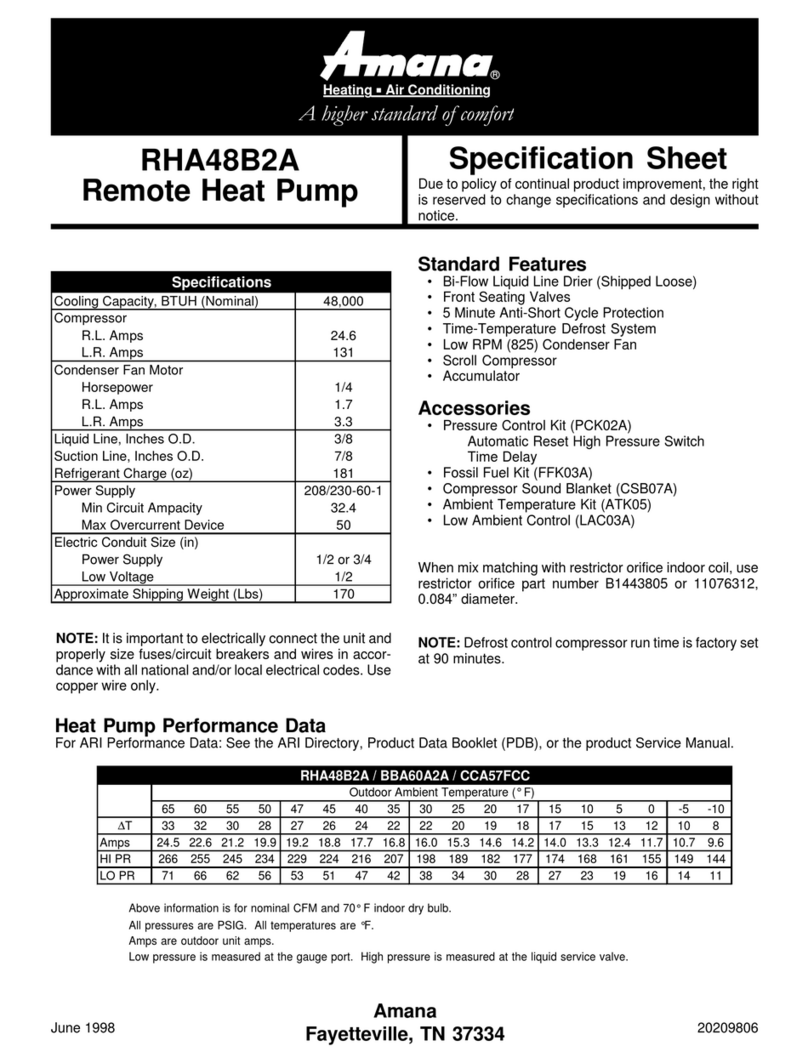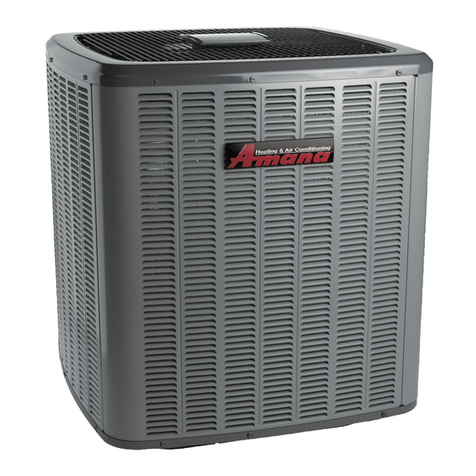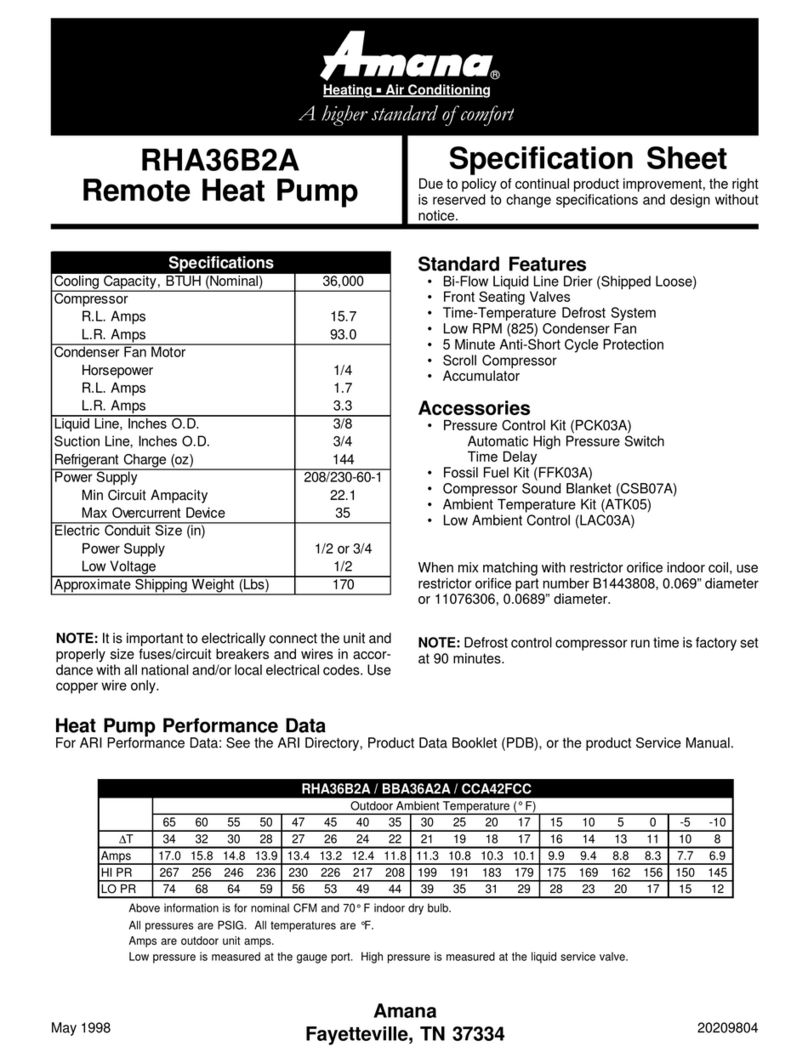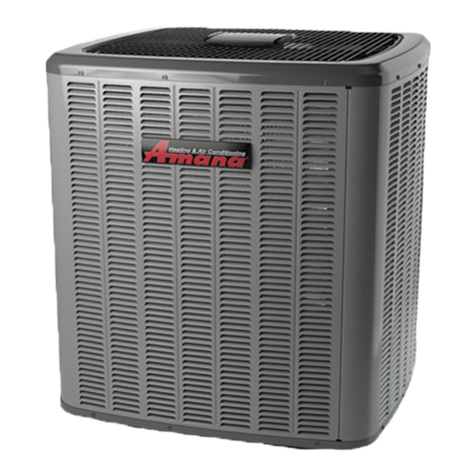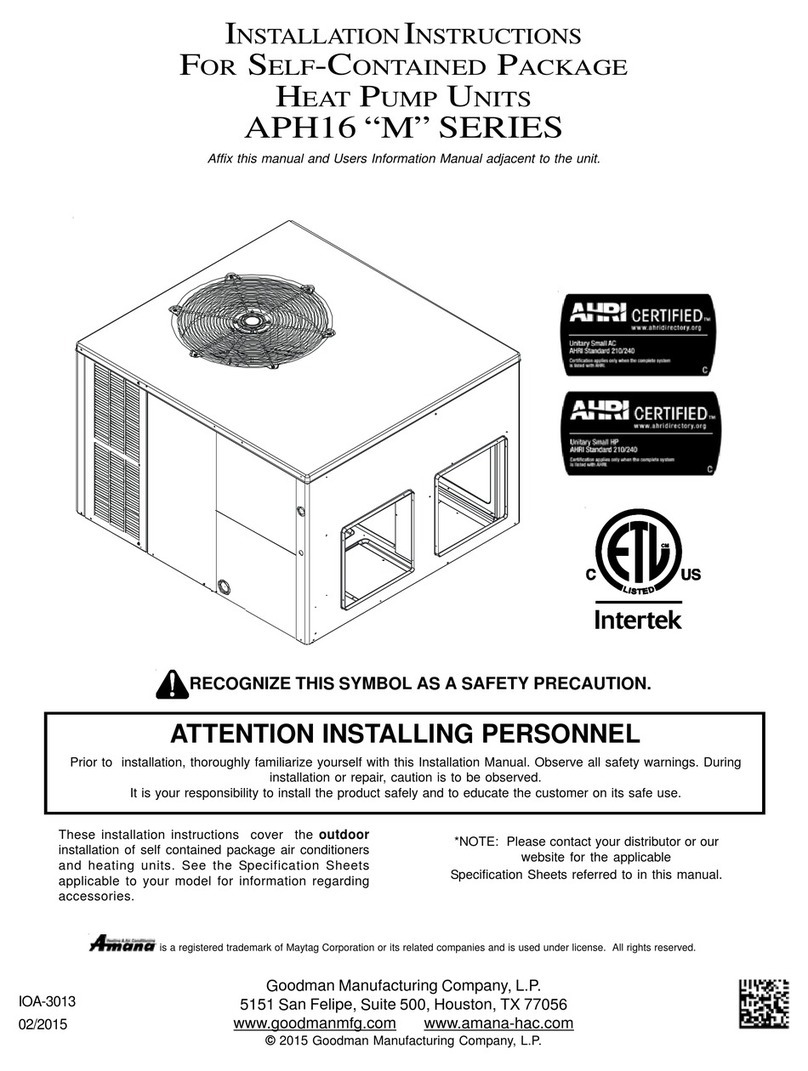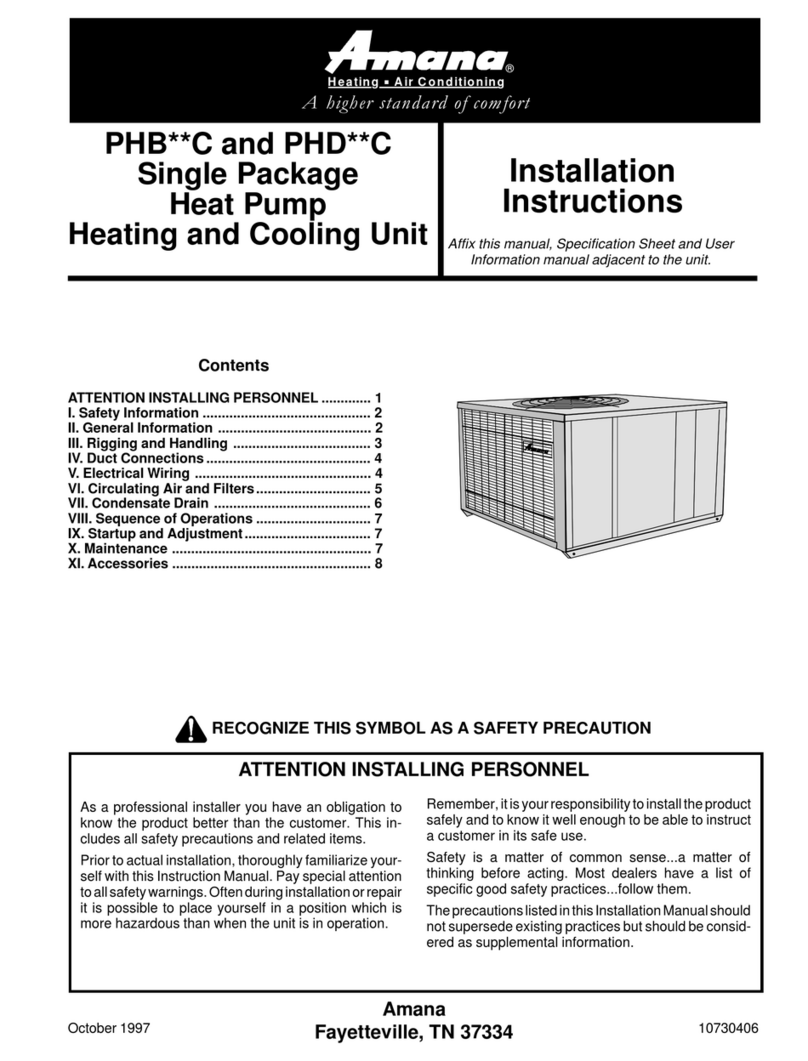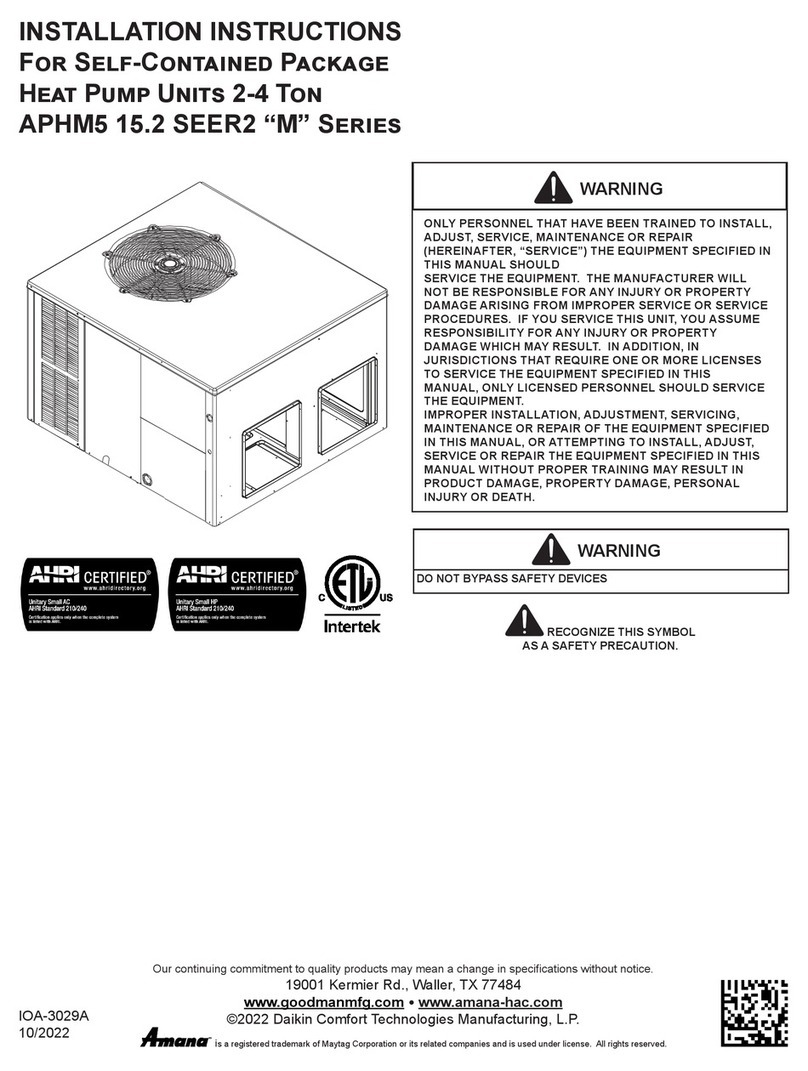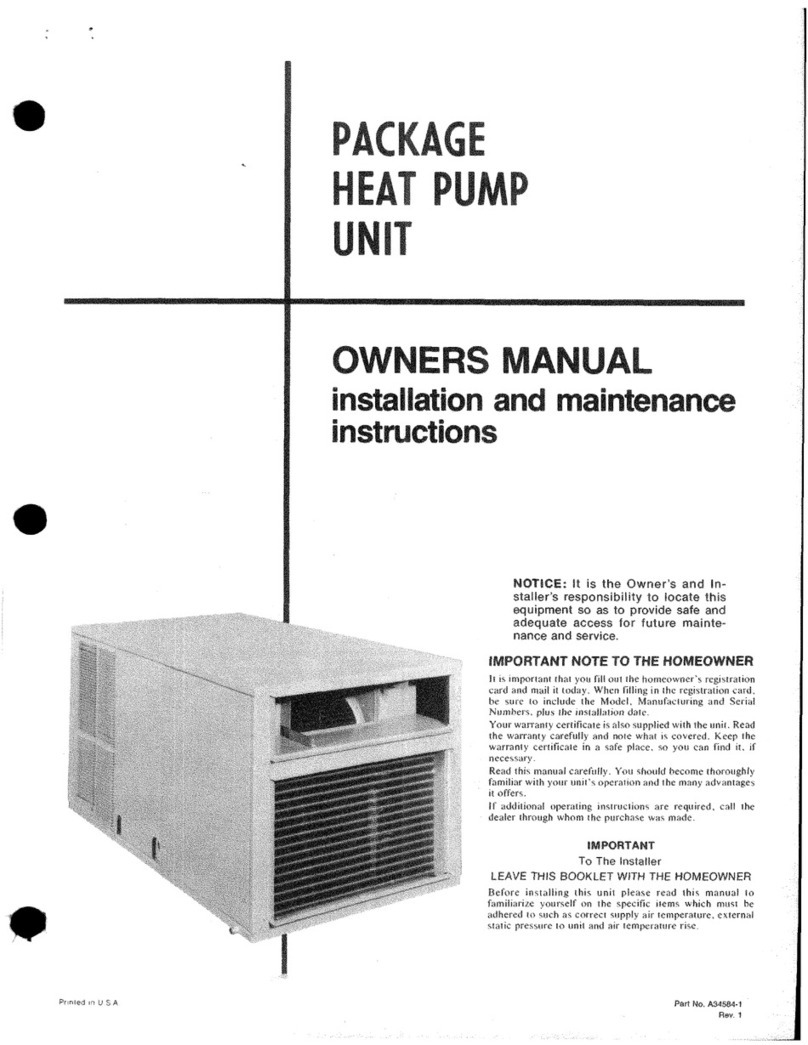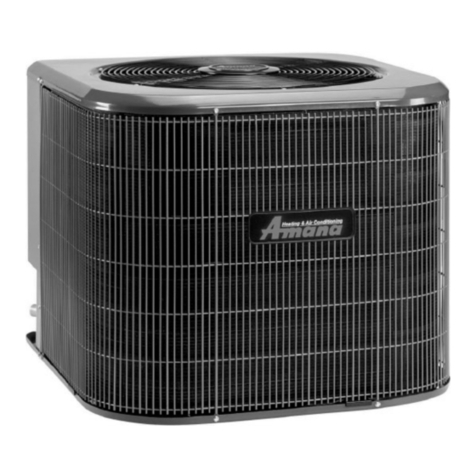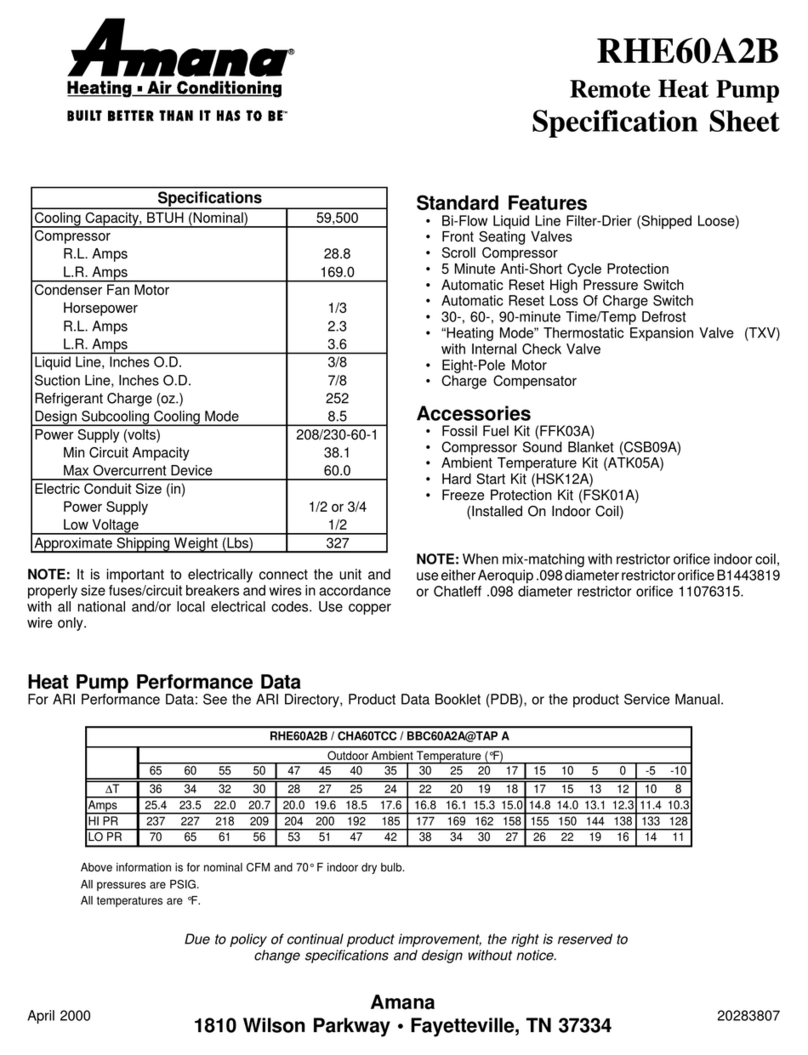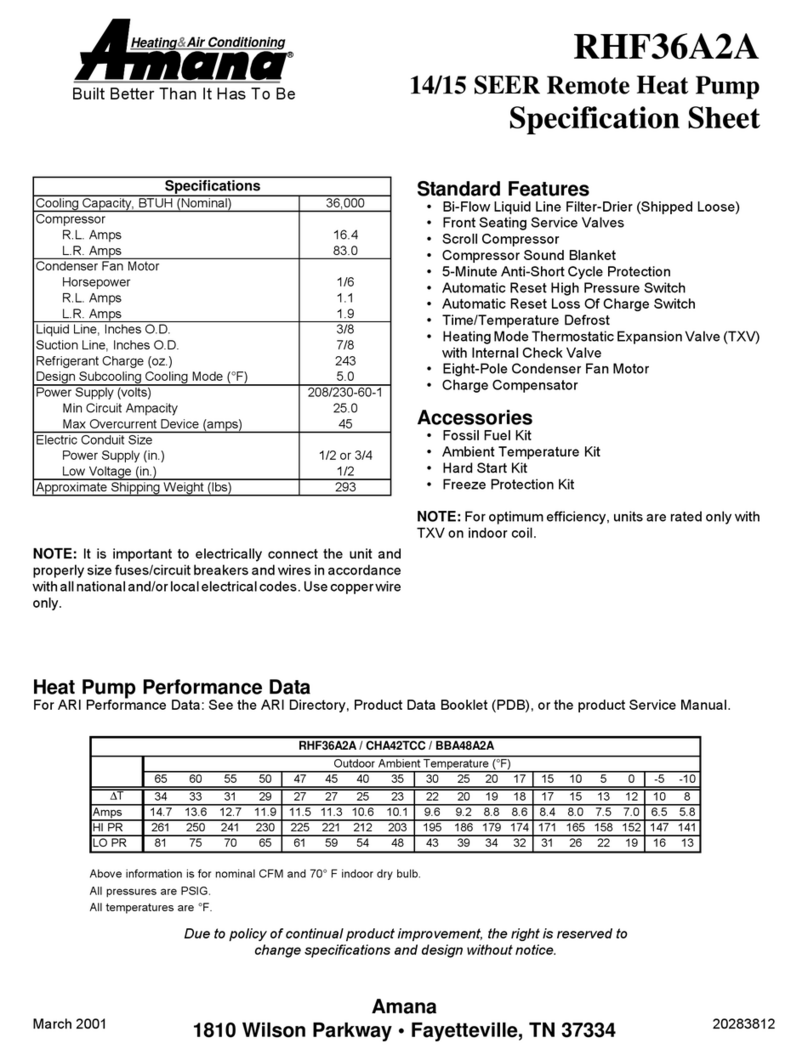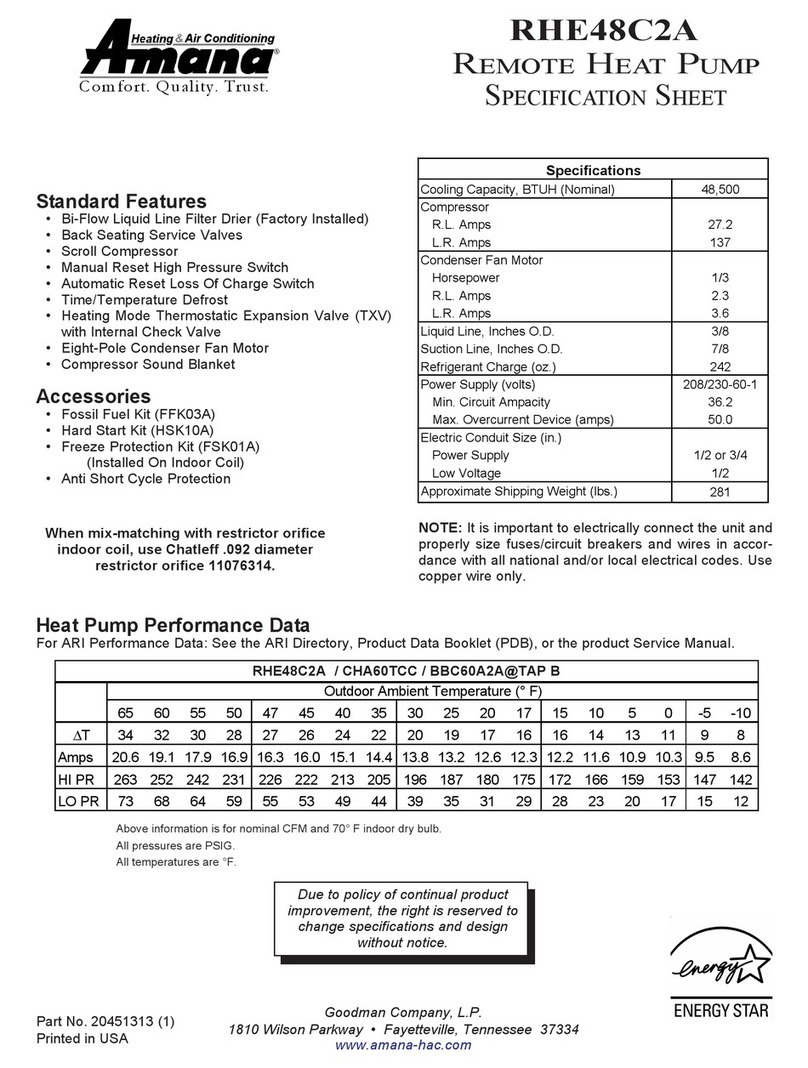
SYSTEM OPERATION
7
The refrigerant used in the system is R-410A. It is a clear,
colorless, non-toxic and non-irritating liquid. R-410A is a
50:50 blend of R-32 and R-125. The boiling point at atmo-
spheric pressure is -62.9°F.
A few of the important principles that make the refrigeration
cycle possible are: heat always ows from a warmer to a
cooler body. Under lower pressure, a refrigerant will absorb
heat and vaporize at a low temperature. The vapors may
be drawn o and condensed at a higher pressure and
temperature to be used again.
The indoor evaporator coil functions to cool and dehumidify
the air conditioned spaces through the evaporative process
taking place within the coil tubes.
Liquid refrigerant at condensing pressure and
temperatures, (270 psig and 122°F), leaves the outdoor
condensing coil through the drier and is metered into the
indoor coil through the metering device. As the cool, low
pressure, saturated refrigerant enters the tubes of the
indoor coil, a portion of the liquid immediately vaporizes.
It continues to soak up heat and vaporizes as it proceeds
through the coil, cooling the indoor coil down to about 48°F.
Heat is continually being transferred to the cool ns and
tubes of the indoor evaporator coil by the warm system air.
This warming process causes the refrigerant to boil. The
heat removed from the air is carried o by the vapor.
As the vapor passes through the last tubes of the coil, it
becomes superheated. That is, it absorbs more heat than
is necessary to vaporize it. This is assurance that only
dry gas will reach the compressor. Liquid reaching the
compressor can weaken or break compressor valves.
The compressor increases the pressure of the gas, thus
adding more heat, and discharges hot, high pressure
super-heated gas into the outdoor condenser coil.
In the condenser coil, the hot refrigerant gas, being
warmer than the outdoor air, rst loses its superheat by
heat transferred from the gas through the tubes and ns
of the coil. The refrigerant now becomes saturated, part
liquid, part vapor and then continues to give up heat until
it condenses to a liquid alone. Once the vapor is fully
liqueed, it continues to give up heat which subcools the
liquid, and it is ready to repeat the cycle.
When the contacts of the room thermostat close, making
terminals R to Y and R to G, the low voltage circuit to the
contactor is completed starting the compressor and outdoor
fan motor. The EEM indoor blower motor is energized at
the cool speed when the compressor contactor energizes.
When the thermostat is satised, breaking the circuit
between R to Y and R to G, the compressor and outdoor
fan motor will stop. The indoor blower will stop after the fan
o delay.
If the room thermostat fan selector switch should be set
to the “on” position then the indoor blower would run
continuous rather than cycling with the compressor.
Any time the room thermostat is switched to cool, the O
terminal is energized. This energizes the 24 volt coil on the
reversing valve and switches it to the cooling position.
When the contacts of the room thermostat close, this
closes the circuit from R to Y and R to G in the unit.
This energizes the compressor contactor and will energize
the indoor blower on models equipped with the EEM motor.
When the thermostat is satised, it opens its contacts
breaking the low voltage circuit causing the compressor
contactor to open and indoor fan to stop after the
programmed 60 second o delay on units with the EEM
motor.
If the room thermostat fan selector switch should be set
to the “on” position then the indoor blower would run
continuous rather than cycling with the compressor.
With the thermostat set to the heat position and a call
for heat, R to W will be energized. This will energize the
electric heat contactor(s)/sequencer(s) and the EEM indoor
blower motor. When the normally open contacts of the
heat contactor(s)/sequencer(s) close, this will energize the
electric resistance heat.
